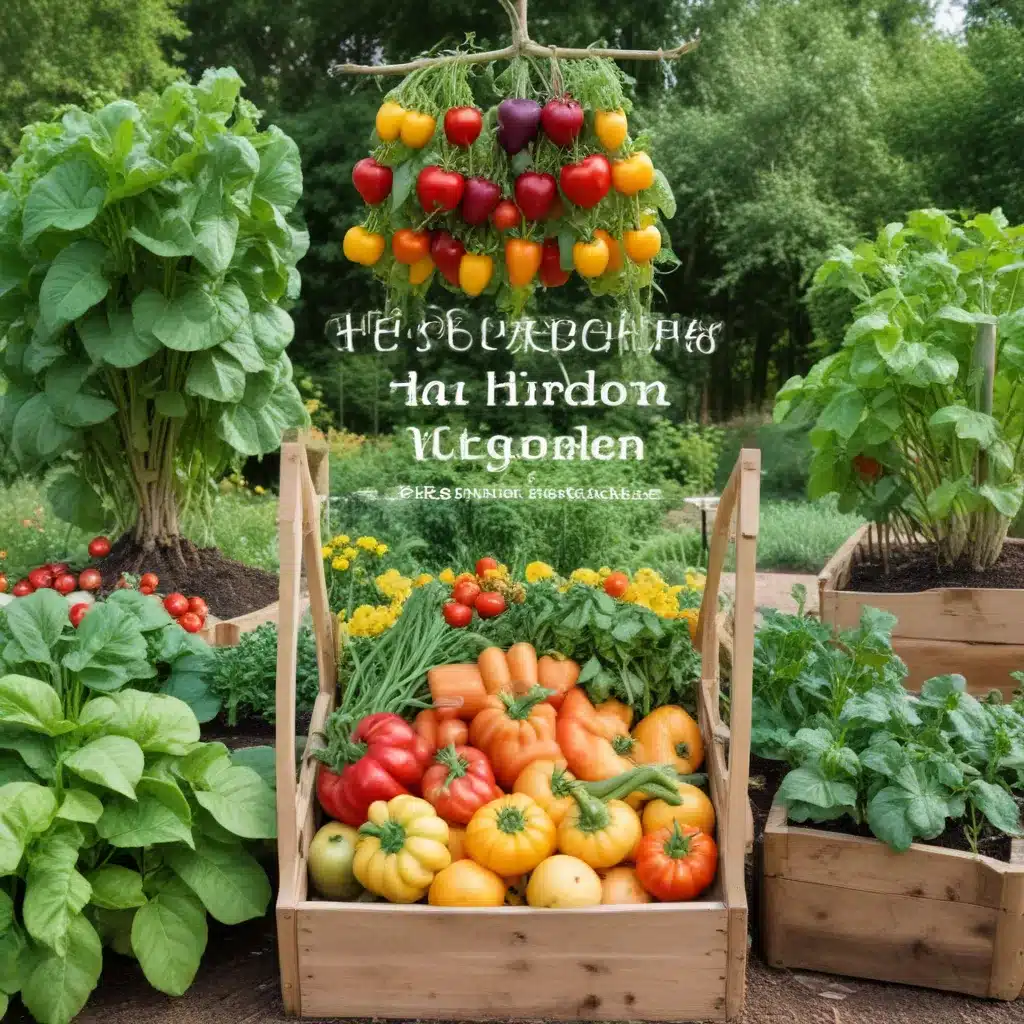
As a farm educator at Crooked Pines Farm, I’m passionate about sharing the joy and importance of growing heirloom vegetables. These unique produce varieties aren’t just beautiful and flavorful – they’re living links to our culinary heritage, preserving genetic diversity that is crucial for the resilience of our food system.
The Benefits of Heirloom Produce
Heirloom vegetables, by definition, are open-pollinated cultivars that were commonly grown generations ago, before the rise of hybrid and genetically modified crops. What sets them apart is not just their stunning appearances – from sunset-orange Pumpkin Spice tomatoes to Pretzel Beans that wind like twists of dough – but their exceptional nutritional profiles and flavor.
Studies have shown that heirloom produce often contains higher levels of vitamins, minerals, and antioxidants compared to modern commercial varieties. This is likely because heirlooms were selected for their intrinsic qualities, not just appearance and shelf-life. When you bite into a juicy Brandywine tomato or a creamy Purple Viking potato, you’re tasting the nuanced, complex flavors that have been passed down for centuries.
But beyond the personal delights of heirloom gardening, growing these unique varieties plays a crucial role in preserving agricultural biodiversity. While hybrid and GMO crops have allowed us to feed growing populations, the genetic narrowing of our food supply leaves crops vulnerable to pests, diseases, and climate change. Heirlooms, with their diverse gene pools, act as a genetic safeguard – ensuring that we can adapt and thrive no matter what challenges the future holds.
Identifying Heirloom Varieties
So how can you spot an heirloom when browsing the seed catalogs or farmers market stalls? Look for produce with distinct histories and identities – ‘Amish Paste’ tomatoes, ‘Moskvich’ cucumbers, ‘Painted Mountain’ corn. Many heirlooms are named after the regions, families, or indigenous communities that have cultivated them for generations.
Heirloom seeds also have a different growing pattern than hybrids. While hybrids are bred to be uniform, heirlooms will display natural variation in size, shape, and color within the same variety. This diversity is a feature, not a bug – it’s a reflection of the plants’ adaptations to local climates and the cumulative selections of countless growers over time.
When sourcing heirloom seeds, seek out reputable small-scale producers, seed exchanges, and specialty catalogs that focus on rare and endangered varieties. Groups like Seed Savers Exchange and Baker Creek Heirloom Seeds are dedicated to conserving heirloom biodiversity. You can also connect with fellow gardeners in your area to trade seeds and stories.
Preparing the Heirloom Garden
Heirloom vegetables may have different growing requirements than modern hybrids, so take the time to research your chosen varieties and plan your garden accordingly. Site selection is crucial – ensure your plot gets at least 6 hours of direct sunlight per day and has well-draining, nutrient-rich soil. Many heirlooms thrive in raised beds or containers, where you can easily optimize the growing medium.
For planting, follow the guidance on your seed packets, but be prepared to adjust spacing and depth based on the unique growth habits of each variety. Some heirlooms, like the sprawling Ground Cherries, require more horizontal room, while others, like towering Kale Trees, need vertical support.
Cultivating Heirloom Crops
Heirloom gardening requires a bit more care and attention than modern hybrids, but the payoff is well worth it. Pest management is key – rely on natural repellents, companion planting, and beneficial insects to protect your crops without harmful chemicals.
Pay special attention to pollination needs. Many heirlooms, like Amish Paste tomatoes and Seneca Cornfield Beans, are self-pollinating, but others, like Pumpkins and Cucumbers, require isolation to maintain varietal purity. Plan your garden layout accordingly, and be prepared to hand-pollinate if needed.
As you enjoy your bountiful heirloom harvest, don’t forget the importance of seed saving. This practice doesn’t just ensure you can grow your favorite varieties year after year – it’s also a way to become an active steward of agricultural biodiversity. Properly drying, labeling, and storing your seeds will allow you to pass on these genetic treasures to future generations.
Preserving the Harvest
Once you’ve grown your heirloom produce, the real fun begins! These unique vegetables lend themselves beautifully to a variety of preservation techniques, from classic canning and pickling to modern freezing and dehydrating.
For canning, pay close attention to acidity levels and follow tested recipes to ensure food safety. Lacto-fermentation is a fantastic way to capture the complex flavors of heirlooms, as the fermentation process actually enhances their nutritional profiles. And don’t overlook the edible potential of often-discarded parts, like Kale Stems or Pumpkin Seeds – these can be dried, pickled, or roasted for delicious snacks.
Whether you’re freezing sliced Pineapple Tomatoes or dehydrating Purple Tomatillos, the key is to capture the peak freshness and flavor of your heirloom produce. Blanching before freezing, or slow-roasting before air-drying, can help preserve the unique characteristics that make these varieties so special.
Sharing the Heirloom Experience
Growing and preserving heirloom vegetables is a true labor of love, but the rewards are immense. Not only do you get to enjoy the exceptional taste and nutrition of your harvest, but you also become a steward of agricultural history and diversity.
As you explore the world of heirloom gardening, I encourage you to share your passion with others – host a seed swap, teach a canning workshop, or invite the neighborhood kids to explore your farm nature trails. By sparking curiosity and wonder around these living links to the past, we can ensure that unique produce varieties continue to thrive, nourishing both our bodies and our communities.
Happy growing!


